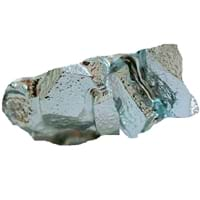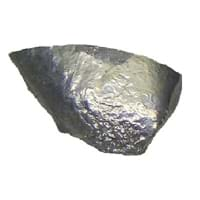Gallium Iridium Comparison
Periodic Table
Symbol
Ga
Ir
Group Number
13
5
9
9
Period Number
4
6
Block
p block
d block
Element Family
Post-Transition
Transition Metal
CAS Number
7440553
32
7439885
99+
Space Group Name
Cmca
Fm_ 3m
Space Group Number
64.00
9
225.00
2
Facts
Interesting Facts
- A gram of Gallium metal can be bought for only three dollars.
- Gallium metal found in ores of following things Coal, Bauxite, Diaspore, Sphalerite, Germanite and Zinc.
- Iridium element occurs as natural alloys of Platinum and Osmium.
- Iridium element is known as the most corrosion resistance metal .
Sources
Earth's crust, Found in Minerals, Mining, Ores of Minerals
Found in Minerals, Mining, Ores of Minerals
History
Who Discovered
Lecoq de Boisbaudran
Smithson Tennant
Discovery
In 1875
In 1803
Abundance
Abundance In Universe
1 * 10-6 %
16
2 * 10-7 %
22
Abundance In Sun
~0.000004 %
16
~0.0000002 %
25
Abundance In Meteorites
0.00 %
16
0.00 %
29
Abundance In Earth's Crust
0.00 %
24
0.00 %
99+
Abundance In Oceans
0.00 %
22
Not Available
Uses
Uses & Benefits
- Gallium arsenide is a very important component of many semiconductors and led manufacturing.
- Gallium nitride is also know as a semiconductor and it is used in Blu-ray technology, mobile smartphones and LED.
- Iridium has an anti corrosion properties and it is used in special alloy with Osmium metal and that alloy is used in pen tips and compass bearings.
Industrial Uses
Electrical Industry, Electronic Industry
Automobile Industry, Electrical Industry, Electronic Industry
Medical Uses
Surgical Instruments Manufacturing
NA
Other Uses
Alloys
Alloys
Biological Properties
Toxicity
Non Toxic
Toxic
Present in Human Body
Yes
Yes
In Blood
0.08 Blood/mg dm-3
13
Not Available
Physical Properties
Melting Point
29.78 °C
99+
2,410.00 °C
7
Boiling Point
2,403.00 °C
99+
4,527.00 °C
10
Appearance
Physical State
Solid
Solid
Color
Silvery White
Silvery White
Luster
Metallic
Metallic
Hardness
Mohs Hardness
1.50
18
6.50
5
Brinell Hardness
56.80 MPa
99+
1,670.00 MPa
5
Vickers Hardness
Not Available
1,760.00 MPa
3
Speed of Sound
2,740.00 m/s
31
4,825.00 m/s
13
Optical Properties
Reflectivity
Not Available
78.00 %
6
Allotropes
No
No
α Allotropes
Not Available
Not Available
β Allotropes
Not Available
Not Available
γ Allotropes
Not Available
Not Available
Chemical Properties
Chemical Formula
Ga
Ir
Isotopes
Known Isotopes
24
15
34
5
Electronegativity
Pauling Electronegativity
1.81
15
2.20
4
Sanderson Electronegativity
2.42
2
Not Available
Allred Rochow Electronegativity
1.82
1
1.55
11
Mulliken-Jaffe Electronegativity
2.01
5
Not Available
Allen Electronegativity
1.76
14
1.68
17
Electropositivity
Pauling Electropositivity
2.19
39
1.80
99+
Ionization Energies
1st Energy Level
578.80 kJ/mol
99+
880.00 kJ/mol
9
2nd Energy Level
1,979.30 kJ/mol
13
1,600.00 kJ/mol
35
3rd Energy Level
2,963.00 kJ/mol
28
Not Available
4th Energy Level
6,180.00 kJ/mol
8
Not Available
Electrochemical Equivalent
0.87 g/amp-hr
99+
1.14 g/amp-hr
99+
Electron Work Function
4.20 eV
23
4.55 eV
13
Other Chemical Properties
Ionization, Radioactive Isotopes
Flammable, Ionization, Radioactive Isotopes, Radioactivity
Atomic Properties
Atomic Number
31
99+
77
39
Electron Configuration
[Ar] 3d10 4s2 4p1
[Xe] 4f14 5d7 6s2
Crystal Structure
Orthorhombic (ORTH)
Face Centered Cubic (FCC)
Crystal Lattice
ORTH-Crystal-Structure-of-Gallium.jpg#100
FCC-Crystal-Structure-of-Iridium.jpg#100
Atom
Number of Protons
31
99+
74
99+
Number of Neutrons
39
99+
110
27
Number of Electrons
31
99+
74
99+
Radius of an Atom
Atomic Radius
135.00 pm
99+
136.00 pm
99+
Covalent Radius
122.00 pm
99+
141.00 pm
99+
Van der Waals Radius
187.00 pm
32
202.00 pm
27
Atomic Weight
69.72 amu
99+
192.22 amu
34
Atomic Volume
11.80 cm3/mol
99+
9.53 cm3/mol
99+
Adjacent Atomic Numbers
Valence Electron Potential
69.70 (-eV)
19
140.00 (-eV)
5
Lattice Constant
451.97 pm
18
383.90 pm
26
Lattice Angles
π/2, π/2, π/2
π/2, π/2, π/2
Lattice C/A Ratio
Not Available
Not Available
Mechanical Properties
Density
Density At Room Temperature
5.91 g/cm3
99+
22.56 g/cm3
10
Density When Liquid (at m.p.)
6.10 g/cm3
99+
19.00 g/cm3
3
Tensile Strength
Not Available
2,000.00 MPa
2
Viscosity
Not Available
Not Available
Vapor Pressure
Vapor Pressure at 1000 K
0.00 (Pa)
15
Not Available
Vapor Pressure at 2000 K
Not Available
0.00 (Pa)
25
Elasticity properties
Shear Modulus
Not Available
210.00 GPa
2
Bulk Modulus
Not Available
320.00 GPa
3
Young's Modulus
9.80 GPa
99+
528.00 GPa
1
Poisson Ratio
0.47
1
0.26
22
Other Mechanical Properties
NA
NA
Magnetic Properties
Magnetic Characteristics
Specific Gravity
5.91
99+
21.78
3
Magnetic Ordering
Diamagnetic
Paramagnetic
Electrical Properties
Electrical Property
Semiconductor
Conductor
Resistivity
270.00 nΩ·m
15
47.10 nΩ·m
99+
Electrical Conductivity
0.07 106/cm Ω
29
0.19 106/cm Ω
10
Electron Affinity
28.90 kJ/mol
31
151.00 kJ/mol
4
Thermal Properties
Specific Heat
0.37 J/(kg K)
16
0.13 J/(kg K)
39
Molar Heat Capacity
25.86 J/mol·K
35
25.10 J/mol·K
99+
Thermal Conductivity
40.60 W/m·K
34
147.00 W/m·K
10
Critical Temperature
Not Available
Not Available
Thermal Expansion
18.00 µm/(m·K)
24
6.40 µm/(m·K)
99+
Enthalpy
Enthalpy of Vaporization
256.10 kJ/mol
36
799.10 kJ/mol
1
Enthalpy of Fusion
5.59 kJ/mol
99+
35.23 kJ/mol
1
Enthalpy of Atomization
276.10 kJ/mol
39
837.00 kJ/mol
1
Standard Molar Entropy
40.80 J/mol.K
38
35.50 J/mol.K
99+
|
||
|
||
|












